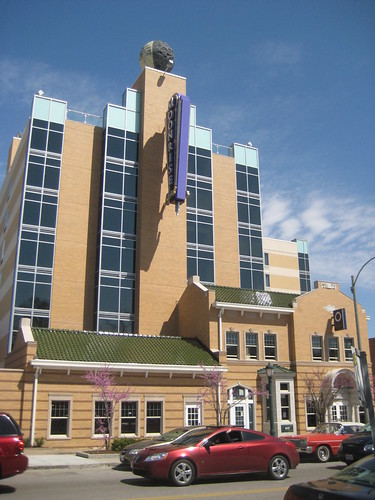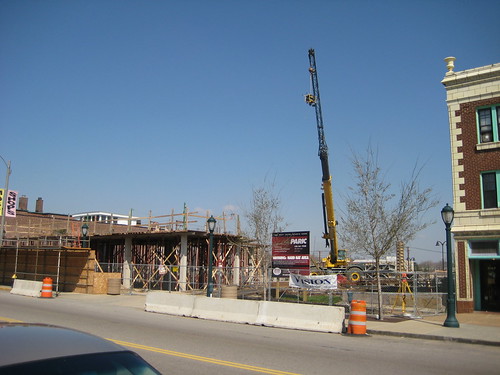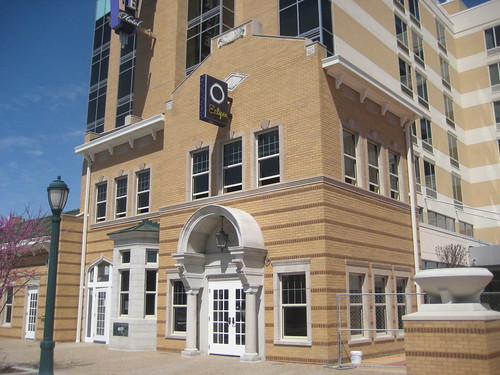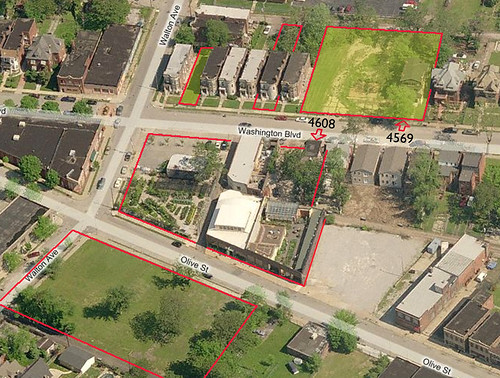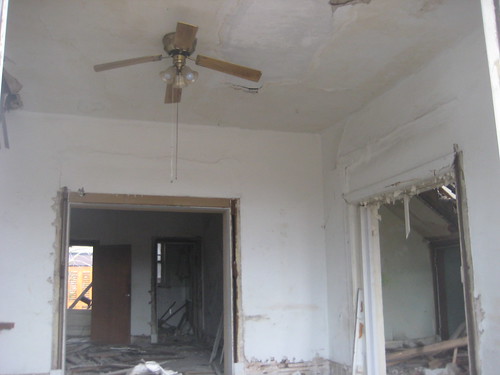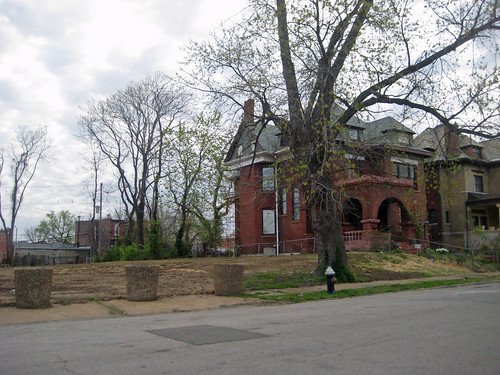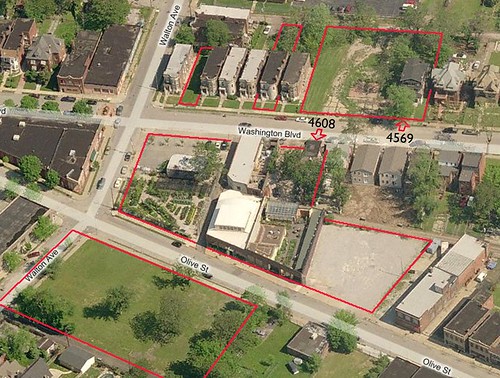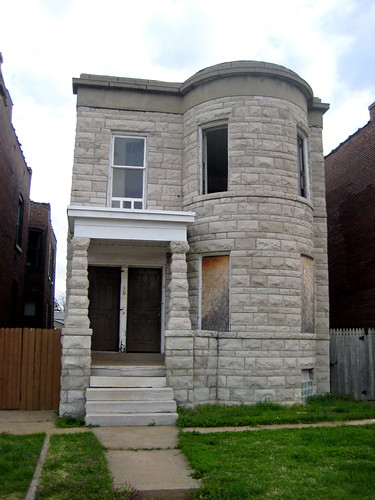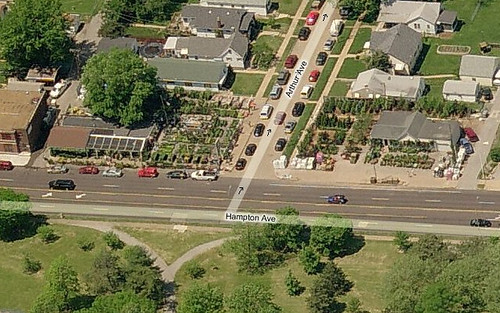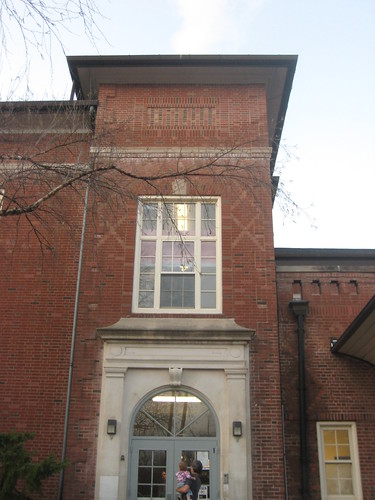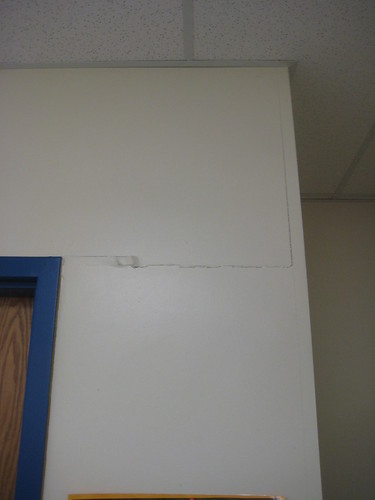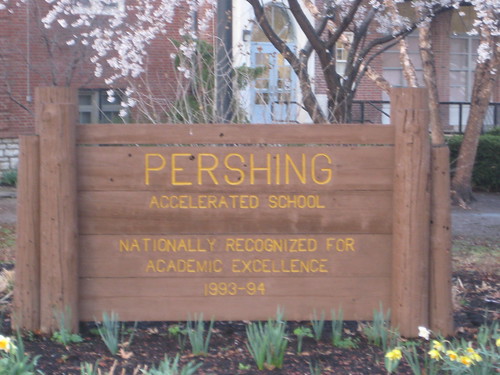The St. Louis Preservation Board voted this afternoon to require rehabilitation of 4100 DeTonty as part of a larger redevelopment proposal to build new houses on adjacent vacant land. The applicant, Delmar Enterprises LLC had proposed demolishing the home for new construction. The house lies within the Shaw Historic District, making it eligible for Historic Tax Credits. The would-be developer however showed his lack of experience with rehab when he testified that saving the home would be unfeasible because he would need to re-build the front porch and would not be able to match the unusual brick. Funny thing is that if the house were demolished, the brick would be salvaged, sold for re-use, in other words use the same brick to re-build the porch (if it needs re-building).

Side and rear of 4100 DeTonty along Thurman. Wouldn't that have been lovely
to have a new house here with siding along Thurman? Photo from Geo St. Louis.
to have a new house here with siding along Thurman? Photo from Geo St. Louis.
Fortunately, the preservation board did not buy the argument and in fact even did some quick math for the developer showing that rehab would be feasible with what the $200,000 estimated he would need to put into it, the 25% Missouri tax credit, and the estimated base sale price of $250-275,000.
 The new construction designs do not look too bad, although the windows are too small and the porches are not well proportioned. See the proposed designs here on the Preservation Board agenda. Above are some townhomes that Delmar Enterprises completed just before the real estate crash, and as you can see the porch columns are too tall, and the entire porch roof is too high. Also, notice how there are more windows on this design than on the newly proposed design.
The new construction designs do not look too bad, although the windows are too small and the porches are not well proportioned. See the proposed designs here on the Preservation Board agenda. Above are some townhomes that Delmar Enterprises completed just before the real estate crash, and as you can see the porch columns are too tall, and the entire porch roof is too high. Also, notice how there are more windows on this design than on the newly proposed design.
The real interesting thing about this proposal though is that the vacant land on DeTonty is still owned by Millennium Restoration & Development. Their development director first found out about this proposal on a post a few weeks ago by Dotage St. Louis. It seems that Alderman Conway went behind their back with another developer, who by the way mentioned at the meeting that he does not have financing in place. Don't you just love St. Louis politics?!
 The new construction designs do not look too bad, although the windows are too small and the porches are not well proportioned. See the proposed designs here on the Preservation Board agenda. Above are some townhomes that Delmar Enterprises completed just before the real estate crash, and as you can see the porch columns are too tall, and the entire porch roof is too high. Also, notice how there are more windows on this design than on the newly proposed design.
The new construction designs do not look too bad, although the windows are too small and the porches are not well proportioned. See the proposed designs here on the Preservation Board agenda. Above are some townhomes that Delmar Enterprises completed just before the real estate crash, and as you can see the porch columns are too tall, and the entire porch roof is too high. Also, notice how there are more windows on this design than on the newly proposed design.The real interesting thing about this proposal though is that the vacant land on DeTonty is still owned by Millennium Restoration & Development. Their development director first found out about this proposal on a post a few weeks ago by Dotage St. Louis. It seems that Alderman Conway went behind their back with another developer, who by the way mentioned at the meeting that he does not have financing in place. Don't you just love St. Louis politics?!


